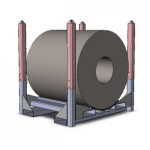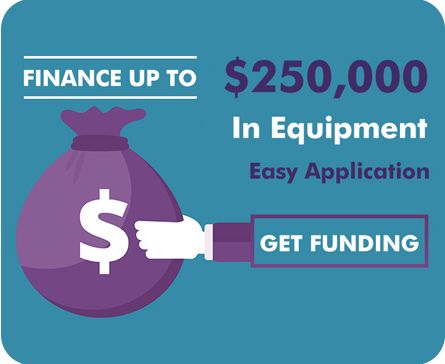Choosing the Right Inventory Valuation Method for Your Business: Is NIFO the Best Option?
Inventory valuation is an integral component of financial management that has an immense effect on a company's profits, tax obligations and strategic decision-making processes. With many inventory valuation methods available - Next-In, First-Out (NIFO) being one - finding one that suits your goals can be dauntingly complex; so let’s explores several inventory valuation methods as a whole in order to assist you with making an informed decision about NIFO valuation methods and whether they might be the right one for your business is key to reaching these objectives.

Understanding Inventory Valuation
Inventory valuation refers to the process of assigning costs associated with inventory at the end of an accounting period, which plays a vital role in calculating COGS, gross profit and net income calculations. Different valuation methods may produce differing financial results – selecting one with appropriate results can ensure accurate financial reporting and decision-making processes.
The main inventory valuation methods include:
- First-In, First-Out (FIFO): Assumes older inventory items are sold first.
- Last-In, First-Out (LIFO): Assumes recently purchased inventory is sold first.
- Weighted Average Cost (WAC): Calculates an average cost across all inventory items.
- Next-In, First-Out (NIFO): Hypothetically values inventory according to its replacement cost in the future.
We shall explore more deeply these methods so as to understand their implications.
Traditional Inventory Valuation Methods
1. First In, First Out (FIFO)
FIFO method assigns the cost of oldest inventory items directly to COGS while newer items remain in stock, making this an effective approach in industries where goods have limited shelf lives such as food or medical industry.
Advantages:
- Increased net income during inflation as older, cheaper inventory is sold first.
- Higher net income during inflation as older, cheaper inventory is sold first.
- Easy to implement and widely accepted under accounting standards.
Disadvantages:
- Higher taxes during inflation due to increased net income.
- Inventory costs on the balance sheet may not reflect current market conditions.
2. LIFO
LIFO is used frequently by industries dealing with non-perishable goods where price fluctuations are significant, typically with non-perishables such as produce.
Advantages:
- Lowers taxable income during inflation by assigning higher COGS.
- Reflects current market costs in COGS.
Disadvantages:
- Lower net income may deter investors.
- Not accepted under International Financial Reporting Standards (IFRS).
- Inventory valuations on the balance sheet may appear outdated.
3. Weighted Average Cost
Weighted Average Cost This approach assigns an average cost for all inventory items, making it useful for companies that store a high volume of similar goods.
Advantages:
- Simplifies inventory tracking.
- Reduces impact of price fluctuations.
Disadvantages:
- Doesn’t reflect actual physical flow of goods.
- May not align with inventory management practices.
The NIFO Method Explained
Next-In, First-Out (NIFO) is a hypothetical valuation method which assigns replacement cost of inventory as cost of goods sold (COGS), on the assumption that its future purchase cost will replace current inventory. NIFO does not comply with standard accounting regulations like GAAP or IFRS and therefore can lead to discrepancies when used as an inventory valuation model.
How NIFO Works
Under the Net Income for Owner (NIFO) method of inventory valuation, items are evaluated using projected replacement costs rather than historical ones. This approach may prove particularly useful during periods of rapid inflation or when prices are expected to skyrocket significantly.
Advantages of NIFO
Real-Time Pricing Insight:
- NIFO reflects the current market environment by aligning inventory costs with replacement prices.
- Helps businesses price products competitively in volatile markets.
Strategic Decision-Making:
- Offers a forward-looking approach to inventory management.
- Assists in budgeting and forecasting by considering future cost scenarios.
Enhanced Profitability Metrics:
- Provides a more realistic assessment of gross margins under inflationary conditions.
Disadvantages of NIFO
Regulatory Limitations:
- Non-compliance with GAAP and IFRS makes it unsuitable for official financial reporting.
Complexity:
- Requires constant monitoring of market prices and adjustments.
- Increases administrative overhead.
Potential Misrepresentation:
- Using hypothetical costs may distort actual profitability metrics.
Comparing NIFO with Other Methods
The choice of an inventory valuation method depends on several factors, including industry type, market conditions, and financial objectives. Here’s how NIFO compares to traditional methods:
| Criteria | FIFO | LIFO | WAC | NIFO |
| Compliance | GAAP/IFRS | GAAP only | GAAP/IFRS | Non-compliant |
| Inflationary Impact | Higher taxes | Lower taxes | Moderate impact | Aligns with market conditions |
| Ease of Implementation | Simple | Moderate | Simple | Complex |
| Reflects Market Prices | No | Partially | No | Yes |
| Administrative Overhead | Low | Moderate | Low | High |
Is NIFO the Best Option for Your Business?
While NIFO offers unique advantages, it’s not universally applicable. Consider the following factors when deciding whether NIFO is the right choice:
1. Industry Dynamics
NIFO may be suitable for businesses in industries experiencing rapid price fluctuations, such as:
- Commodities trading
- Manufacturing with volatile raw material costs
- Retail sectors with high inflation rates
2. Regulatory Compliance
If your business operates in jurisdictions requiring GAAP or IFRS compliance, NIFO is not a viable option for official reporting. However, it can still serve as an internal management tool for decision-making.
3. Financial Strategy
Businesses prioritizing accurate gross margins and real-time market alignment may benefit from NIFO, despite its complexities.
4. Administrative Resources
The implementation of NIFO demands advanced inventory tracking systems and regular market analysis. Ensure your business has the resources to manage these requirements effectively.
Practical Considerations
If you’re considering NIFO as an inventory valuation method, here are practical steps to evaluate its suitability:
- Conduct a Cost-Benefit Analysis: Evaluate both administrative costs and strategic benefits associated with using NIFO.
- Utilize Technology: Consider purchasing inventory management software capable of tracking replacement costs and market trends.
- Utilize as a Supplemental Tool: Implement NIFO as an internal decision-making method while employing compliant methods for official reporting purposes.
- Seek Professional Advice: Seeking professional guidance will ensure your business goals and regulatory requirements align perfectly. To this end, financial advisors or accountants are highly recommended as reliable guides in this regard.
Conclusion
Selecting the ideal inventory valuation method can have a substantial effect on your company’s financial health. While NIFO provides specific benefits in certain situations, its noncompliance with accounting standards and administrative complexity make it unsuitable for many businesses. Before making your choice, carefully assess industry dynamics, financial strategy and regulatory environments before selecting an inventory valuation method.
About The Author










